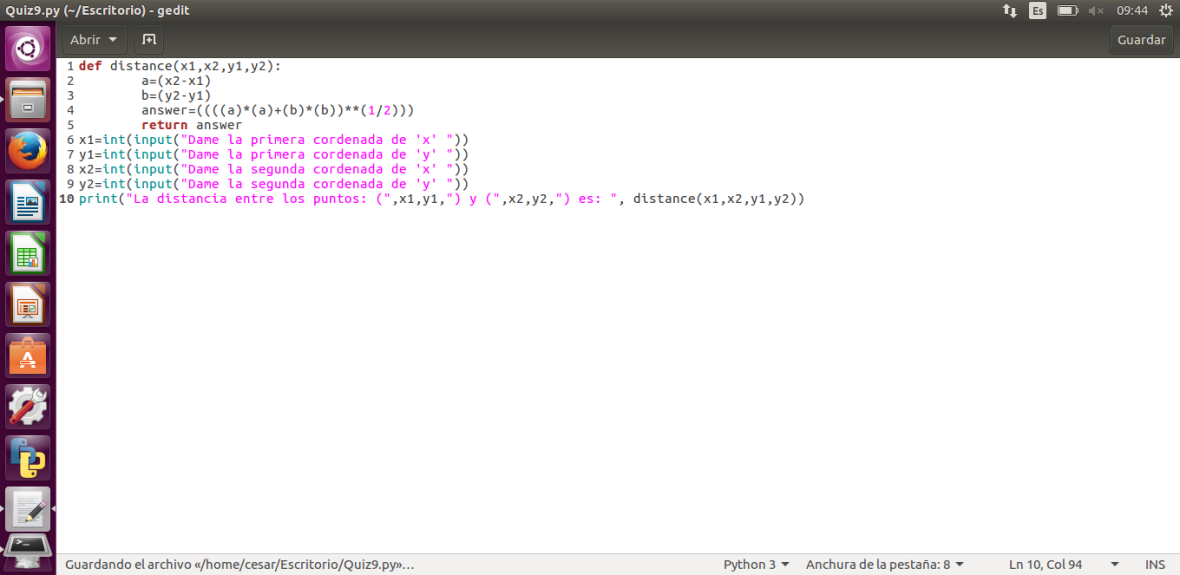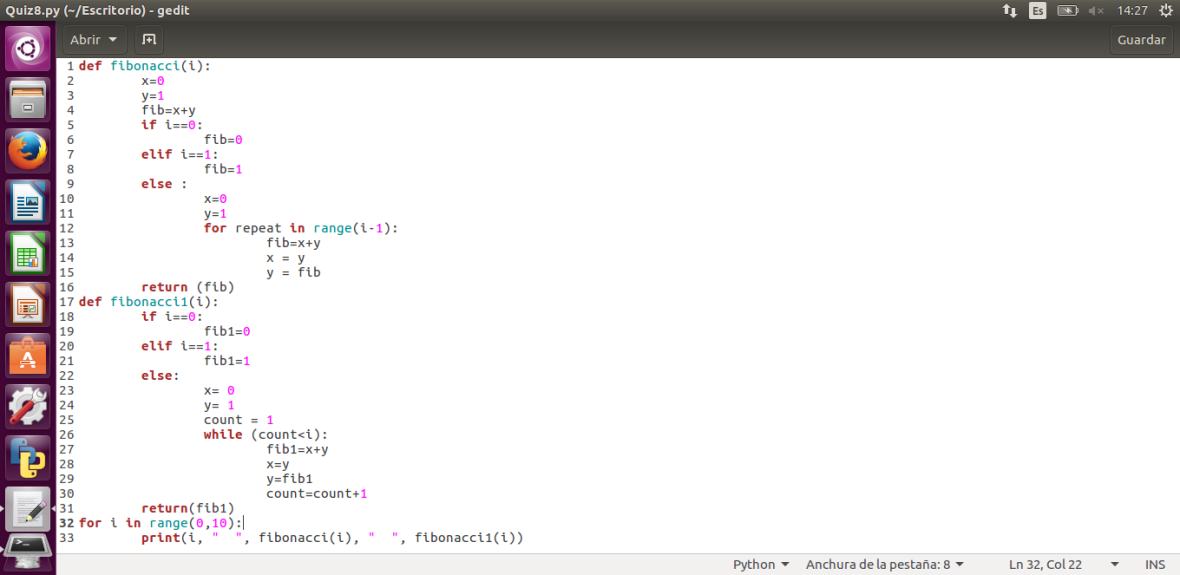--Originally published at Python
El quiz 11, hasta el momento el quiz mas dificil de todos. Mas que nada por el largo. Empezemos con lo basico, las instrucciones.
Aqui esta el link para las instrucciones con ejemplos:
https://kenscourses.com/tc1014winter2017/wp-content/uploads/2017/03/TC101_FinalExamQuestions.pdf
1: Escribe el función distancia cual recibe 4 números (x1, y1, x2, y2) cuales representan dos puntos en espacio (x1,y1) y (x2,y2). El método debe regresar la distancia entre los dos puntos. Recuerda que el valor cuadrada del hipotenusa del triangulo es igual que la suma de las cuadradas de los otro dos lados del triangulo (the hypotenuse squared is equal to the sum of the squares of the other two sides).
2. (5 puntos) Escribe un función que se llama triangulo cual recibe un parámetro size y imprime un triangulo derecho como el siguiente. El renglón mas grande debe llevar size numero de “T”. SOLO imprime los “T”s y los endlines. Nota que no hay characteres (espacios) a la derecha de los T’s. Debe usar un ciclo “for” para controlar el repetición. Ejemplo es si size era 6
3. Escribe la función factorial cual recibe un entero “x” y regresa el valor de x! Recuerda que 0! = 1, 1! = 1, 2! = 2, 3!= 6, 4! = 24, etc. Para los de Python: NO PUEDES usar el factorial como parte del module “math”
4. Escribe una función que se llama promedio_lista que recibe un parámetro (una lista (Python) o arreglo/Vector de C++) de valores float y regresa como float el promedio de los números en la lista.
5. Escribe una función que se llama smallest_of_four cual recibe cuatro valores float como parametros y regresa el minimo (más pequeño) de los valores. Ojo: puede recibir unos valores iguales.
6. Escribe una función que se llama fibonacci cual recibe un número n



